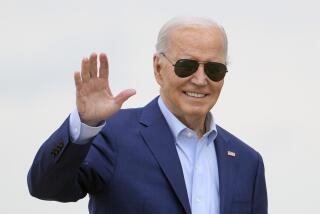To Protect Ecosystem, Grand Canyon Hopes to Evict Buffalo
From the North Rim of the Grand Canyon, a herd of buffalo can be seen grazing in pristine meadows among ponderosa pines and scattered springs.
The animals have been wandering in and out of Grand Canyon National Park since about 2000. About 150 now make it their home.
But although both the bison and the breathtaking canyon share a common bond as icons of the West, it’s not necessarily a welcome union.
Officials at the park, which includes more land than just the canyon, are concerned about what the nonnative bison are doing to the area’s delicate ecosystem and rare native animals.
The bison trample vegetation, defecate in ponds, pollute springs and create wallows, said Elaine Leslie, a wildlife biologist at the Grand Canyon. Some of the soil they tread on has also begun to erode, putting trees and plants at risk.
Consequently, park officials have met with the state to discuss how to remove the bison, which the state owns and maintains on land outside the park.
“We need to figure out how to get these animals out of the park eventually,” Leslie said.
There has been discussion about a fence, but that would also keep other animals, such as elk, from moving freely. Few other concrete ideas have emerged.
“We’re at the learning step to determine what action, to determine which way to go,” said Dawn O’Sickey, a Grand Canyon spokeswoman.
American bison were introduced into northern Arizona about 100 years ago as part of a ranching operation to crossbreed them with cattle. The goal was to combine a desirable food source with the bison’s ability to withstand harsh environments. The state bought the animals in 1925 after the experiment failed.
Arizona’s Game and Fish Department has been keeping the free-ranging herd at the House Rock Wildlife Area, a parcel of land on the Kaibab National Forest. The state makes some money from allowing the bison to be hunted.
The bison began wandering up the Kaibab Plateau in the 1990s and into the park about three years ago.
Ron Sieg, a Game and Fish Department regional supervisor, said the bison favor timbered areas and were probably attracted to the park’s improved habitat.
Preliminary DNA results of more than 20 samples taken from the herd shows all but one of the buffalo have a high frequency of cow genes, Leslie said. So although they resemble bison, the herd includes hybrids, called beefalo or cattalo.
The bison don’t enter the canyon itself. But, they do enter other sensitive areas in the park.
Leslie said the bison graze in the Mexican spotted owls’ critical habitat, an area essential for conserving the endangered birds. They also venture into what is home to lions and mule deer and along the canyon’s rim where mountain sheep graze.
She said officials are concerned about diseases and parasites the bison could carry.
Park visitors haven’t had any negative encounters with the animals, but the possibility remains a concern. “Folks aren’t used to coming to Grand Canyon National Park and dealing with bison,” Leslie said.
More to Read
Start your day right
Sign up for Essential California for news, features and recommendations from the L.A. Times and beyond in your inbox six days a week.
You may occasionally receive promotional content from the Los Angeles Times.






